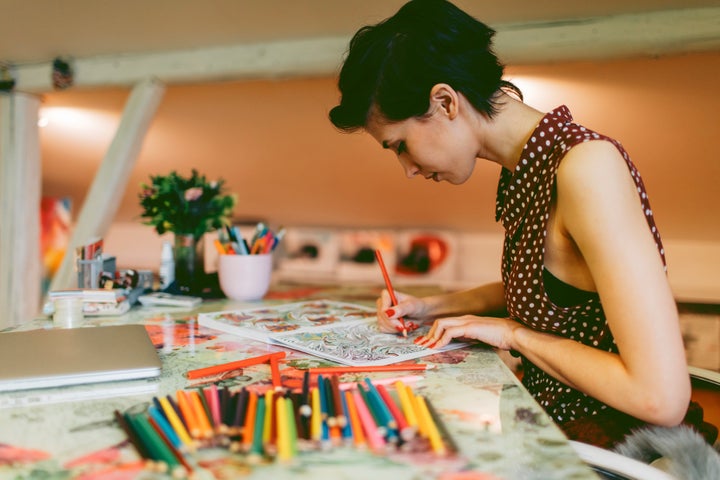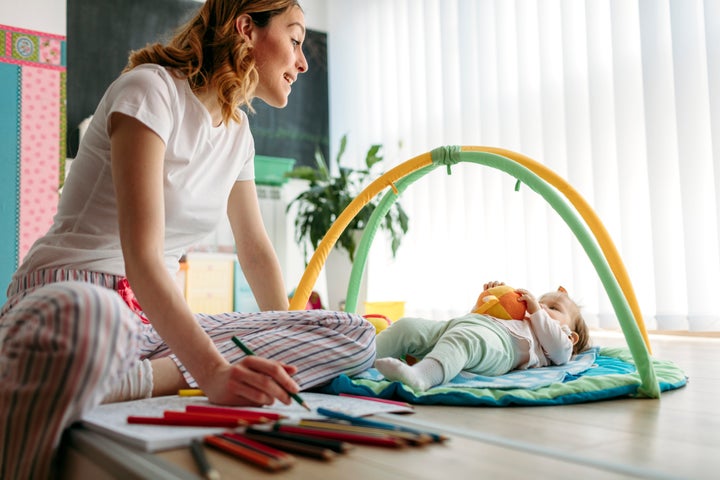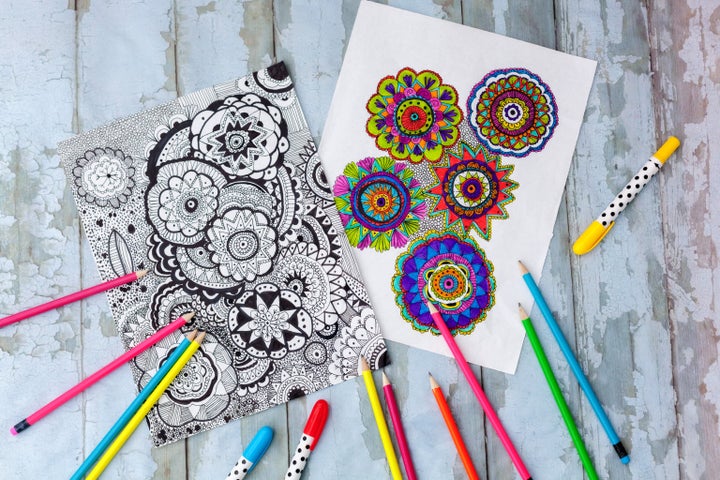
In 2013, Lucy Fyles became virtually housebound with a severe anxiety disorder, so she picked up a colouring book and set to work. Lucy hoped for a momentary distraction, but colouring quickly became an essential part of her everyday coping strategy.
“The repetitive motion of colouring is very soothing,” she says. “Colouring requires concentration to be able to stay in the lines and pick colours that go well together. This helps slow down my anxious thoughts and replace them with what colour I might use next and how I feel about how the page is coming together.”
Lucy still has a severe anxiety disorder and she still colours (she blogs about it at Colouring in the Midst of Madness). Colouring isn’t a cure for her illness, but it does help her to control the symptoms.
“When I’m very anxious I can’t colour because I can’t focus on anything and my hands shake and my vision is blurred,” she says. “But if I feel my anxiety rising and can start colouring quickly enough it can stop me from having panic attacks and can slow down my thoughts again.”
Colouring goes mainstream
If colouring can help someone with a severe anxiety disorder, what can it do for the rest of us? The explosion in popularity of adult colouring books in the last few years suggests that the simple but immersive pleasure of adding colour to pre-printed images can be as addictive for grown-ups as it is for children, and might even be therapeutic.
Adult colouring has certainly gone mainstream. In 2015 it was reported that one of the most popular books - Secret Garden by Johanna Basford - had sold nearly 1.5 million copies. A year later, the revival of traditional printed publishing was partly attributed to the popularity of the adult colouring genre.

So why do adults want to colour? Richard Merritt is an illustrator who has created a series of popular adult colouring books. He thinks adults like them because they offer time out from ‘always on’ digital culture.
“There’s no flashing screens or noisy ringtones,” he says. “It’s just you, the paper and a pen or crayon. So it’s quite old-fashioned, but a welcome relief to the madness of the modern world where we are bombarded with so much information all the time. This makes it a relaxing experience. Whilst colouring in, your brain goes into autopilot and you can forget about everything else going on in your life for a brief moment.”
Stress-relieving, habit-forming
For some adults, colouring is fun. For others, it acts as stress relief. A 2012 study found that colouring mandalas - circle and spiral shapes inspired by Hindu and Buddhist symbolism - significantly reduced anxiety in students, and was more effective than other forms of colouring.
More recently, neuroscientist Dr Stan Rodski administered an identical stress management programme to two groups of harrassed executives. One of the groups was also given the ‘Colourtation Method’, which involved 30 minutes a day of colouring. Both groups reduced their stress levels, but the Colourtation group did so by significantly more (46% compared to 21%).
The researchers concluded that “the Colourtation Method provides a viable alternative to traditional methods such as relaxation breathing,” and that it can “provide a ‘fun’ habit-forming activity to improve stress management outcomes.”

An artistic alternative to mindfulness
Colouring isn’t art therapy, which is a recognised branch of psychotherapy, but Derby-based art therapist Marta Perestrello believes that it can be a useful tool for encouraging mindfulness. “Above all, colouring books facilitate the individual’s near trance state which in turn will help lower stress levels and improve quality of life,” she says.
“I would say that colouring could be classified as a mindfulness activity, and for this there has been plenty of evidence of its therapeutic benefits.”
That conclusion comes as no surprise to Lucy Fyles, who worked as a nursing assistant on a psychiatric ward before her own illness forced her to give up, and regularly recommended colouring to patients. “It would visibly calm them down,” she says.
“Repetitive physical movements such as those used in colouring, crochet, knitting and sewing are known to calm the brain down and increase theta waves which bring on an almost meditative state - you physically cannot be anxious at the same time.”
So evidence suggests that colouring can help control stress and anxiety, and at a few pounds for a colouring book, it’s one therapy we can all afford to try.